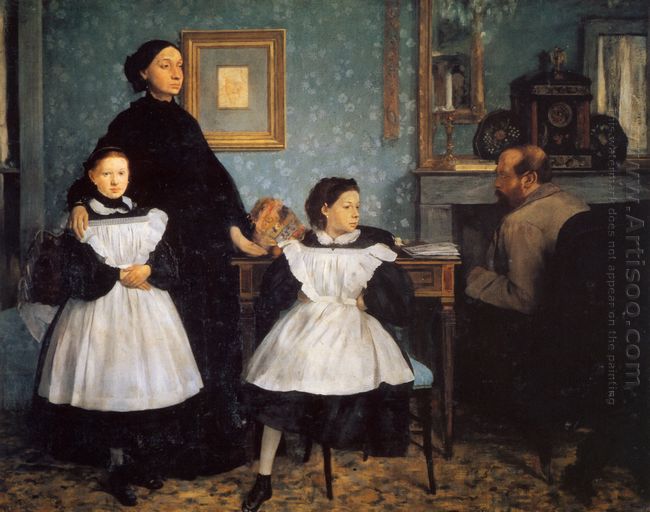Edgar Degas’s keen intellect made him aware of a new artistic flow, which was “realism art”. But this theory advocated abandoning the Greek ideal of beauty, and replaced it
with the performance of simple and sincere things. In order to get close to the beautiful ideals and not separate from the reality,
Degas’s creative approach was to use the clean lines and light and dark skills. If you want to describe the reality, you must make the technique obedient to the uniqueness of image. The portraits of Degas youth accurately showed his faith, excellent skills, exquisite feeling and conventional standards for the sketches. For example, The Belleli Family depicted the painter’s aunt and two cousins. The painting’s large frame and complicated subject were easy for people to consider the heaviness of completing this task.
This was a realistic scene. But here the artist failed to show a sense of space, and the fine sketch did not show the sense of volume. And the harmonious and gentle colors (blue, white and black) did not reach the tone effect. The painter focused all the attention on the depiction of characters. The characters seemed not to make the posture, but we were unable to say the painter seize them quickly. This portrait painting showed the good education of the aristocratic families, legal obedience (so is the painter), insufferable arrogance and defiance. The painter’s aunt was portrayed meticulously. For the painter, this could replace the beauty, but it lacked the life force. All the characters were mainly to arouse a profound respect as similar as the excellent sketch in the whole painting as in Degas’s mind. This profound respect was so strong that it did not leave any space for the artistic appeal.
